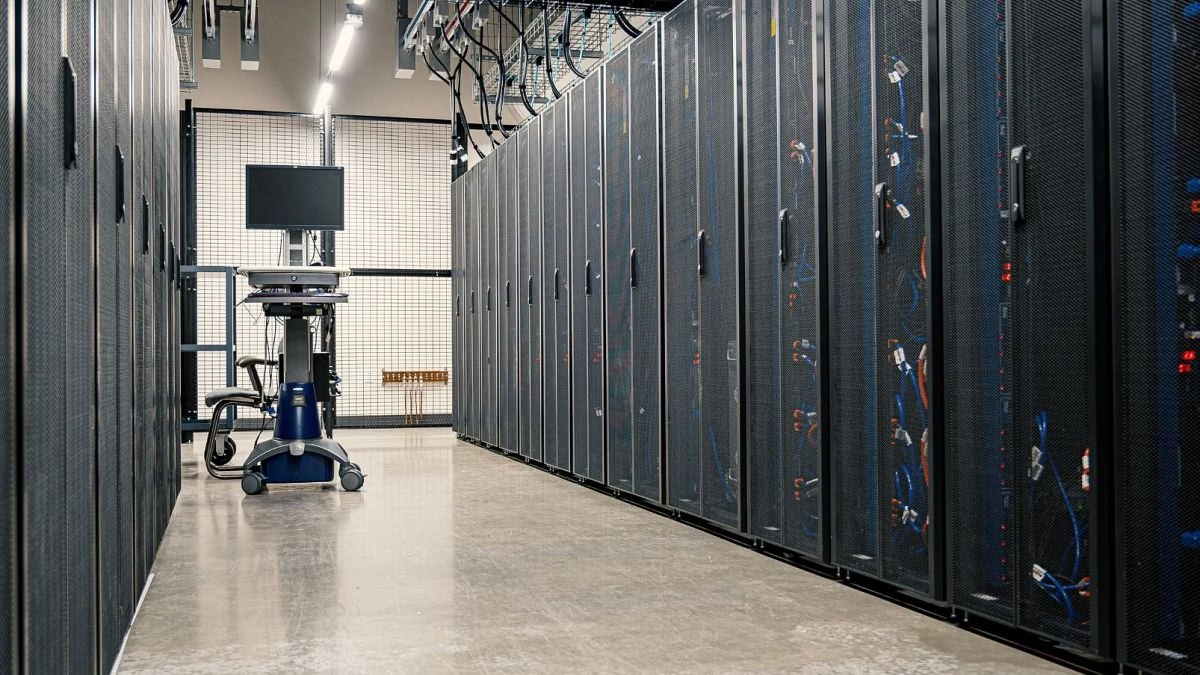ByEgle Markeviciute EU Tech Loop with Euronews
Published on

ADVERTISEMENT
Central and Eastern Europe lack sufficient data centres, despite having ideal conditions, a new mapping tool reveals.
As the European Union prepares to invest €20 billion in artificial intelligence (AI) gigafactories, Poland and the Baltic states are striving to secure investment and bolster the region’s digital sovereignty.
The International Energy Agency’s (IEA) Energy and AI Observatory has released a report on Europe’s data centre infrastructure, encompassing both existing and upcoming facilities.
The IEA map depicts small operating hubs with a capacity of less than 500 megawatts (MW) as blue, larger operating hubs with over 500 MW capacity as green, and planned hubs with more than 500 MW capacity.
Data centres, particularly those optimized for AI and HPC, are suited for colder climates with abundant water resources.
Nonetheless, most hubs are concentrated in Western and Southern Europe, leaving Central and Eastern Europe mostly underserved – with exceptions for some smaller existing and larger planned hubs, like one in Poland.
AI-optimized data centres in this region are vital for the EU’s east. They promote economic growth by creating high-value jobs, enhance local AI ecosystems, and reduce latency and improve performance for finance, cloud services, AI, and streaming.
The investments also send strong signals to attract foreign investors, which is vital for countries that have seen reduced investment due to their proximity to Russia.
Despite local governments’ willingness for this kind of foreign direct investment and appropriate conditions, private investment in the region remains modest.
Next Steps: AI Gigafactories
The European Commission’s imminent decisions on the AI gigafactories (with four to five projected) are critical. These decisions will demonstrate the bloc’s confidence in and readiness to invest in its eastern area.
AI gigafactories will be advanced, large-scale AI compute and data storage hubs, designed to develop, train, and deploy cutting-edge AI models and applications at an unprecedented scale – for instance, models with hundreds of trillions of parameters.
These facilities will establish new standards for AI model training, inference, and deployment by combining extensive computing power, energy-efficient data centres, and AI-driven automation.
The Commission announced in June that it received 76 expressions of interest from 16 EU countries to build AI gigafactories, and plans to allocate €20 billion for such projects.
For reasons of “confidential business information within their expressions of interest,” the Commission has chosen not to disclose the applicants’ identities.
However, in June, Poland and the Baltic states submitted a joint application for an AI gigafactory, indicating both Poland’s ambition and the Baltic states’ caution regarding the Lumi AI factory in Finland and its accessibility to the Baltic states.
Poland and the Baltics appear committed to these plans and are seeking partners to invest in the project or help build a wider AI and technology ecosystem around it.





